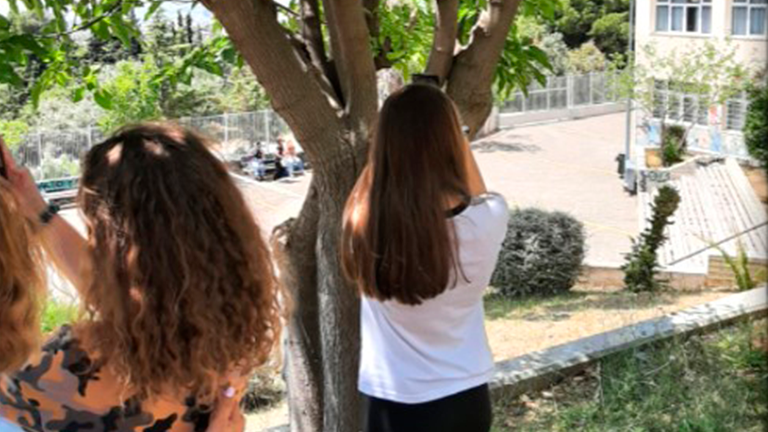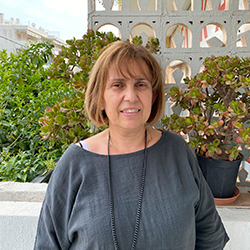
Christina Kalatha is a Greek Math teacher based at the 2nd High School in Melissia, a suburban municipality of the greater Athens area. Christina was among the participants of the first Cos4Cloud project’s online teacher training course organised and run by the NKUA. Together with Smaragra Kollia, Ioanna Ntinou and Varvara Petridou they designed an educational scenario for secondary school students named “The magic world of plants in our school’s garden”.
Christina Kalatha designed and carried out an environmental education and citizen science project using the Pl@ntnet citizen observatory and services with 14 students from the 2nd High School in Melissia.
The magic world of plants in our school’s garden: a two phases project
The project was implemented in two phases. The first phase took place in the spring term last year (2020-2021), and it was run online following the pandemic measures applied across all Greek schools. Thanks to several distance education meetings in Webex and following their teacher’s introduction and guidelines, the students got familiarised with the Pl@ntnet platform and mobile app by strolling around and taking pictures of various plants in their neighbourhood and residence areas during their free time outside the school schedule.
The second phase took place during autumn 2021. Coming back to schools and the regular face-to-face teaching conditions in September, the students had the opportunity to meet and work together to record and identify plants with the Pl@ntnet app within the school context. Christina organised field trips for observation and nature studies in the schoolyard and garden so that the students could take pictures and identify plants with the Pl@ntnet app, as well as design an environmental path based on their recordings. After validation, the six plant species identified were laurel, oleander, canary ivy, white mulberry, locust bean, and boxwood. They sorted their observations into tables and analysed them by bringing back their observations and collecting data in class.

The data entries and the new knowledge gained was pedagogically integrated into the students’ Math curriculum. How? Christina used Pl@ntnet as a learning tool and the recorded plants as learning examples to teach students about the mathematical concept of distribution and the construction of curves to represent a plant’s spatial span across the globe and the seasonal changes in its life cycles during the year.
Photo: Christina Kalatha.
Christina’s students evaluated their learning and participation experience and stated that they had increased their understanding of plants and mathematical concepts. Starting from the optimal use of Pl@ntnet for the accurate identification of plant species, the students highlighted the importance of the pictures’ quality; for example, the sharper the plant images were and more plant parts included, the more successful and valid the identification the plant species was. Moreover, the students realised that scientific research and the collection of nature-based data is fun, although it needs to be rigorous. They also felt motivated to learn more about small-scale urban ecosystems in their close surroundings (i.e. their neighbourhoods and park areas) and environmental quality as an indicator of sustainable development. Furthermore, the students rated their participation in the project positively by acknowledging that it helped them develop new digital skills that enriched their competence as active citizens.

















